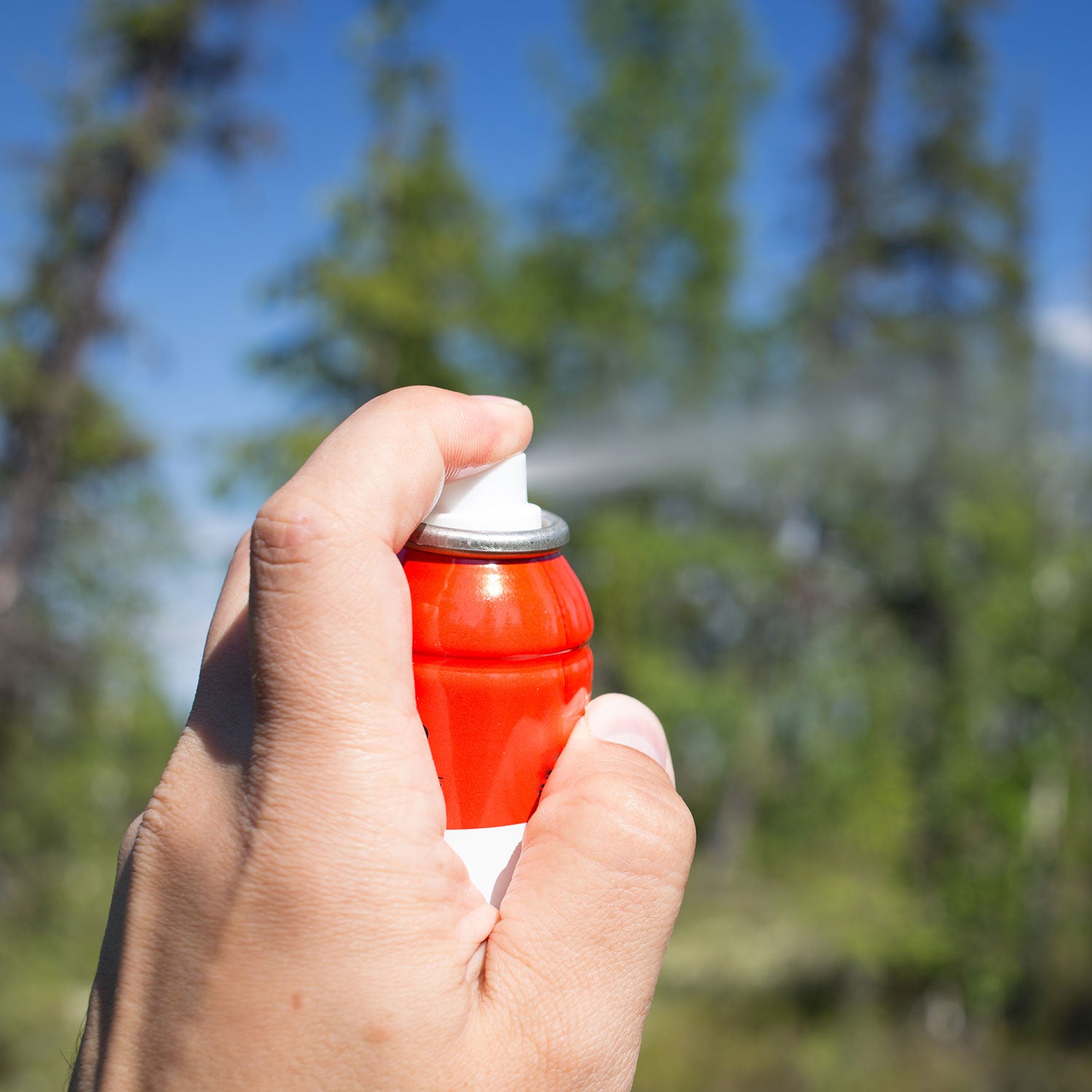If you’re heading somewhere with lots of insects—say, a swamp in the Everglades or the Amazon—you’ll likely want to use an insect repellent. have shown that the most effective insect repellent on the market today is DEET, but others have raised questions over the potential health and environmental impacts of the stuff.
DEET, known to chemists as N,N-diethyl-meta-toluamide, was developed in the 1940s by and for the U.S. Army. It’s since become widely used by everyone from hunters and campers to fishermen and long-distance hikers to combat mosquitoes and ticks. The and the both say DEET is safe for use and causes no known environmental or health risks, as long as it’s used properly per the directions on the label.
But there’s one thing DEET is likely bad for: your outerwear. According to the , DEET, a plasticizer, can cause damage to other plastics, including synthetic or treated fabrics. (It won’t damage natural fibers, like cotton or wool.) Spray DEET on a Gore-Tex jacket, for example, and the repellent could break down the plastic polymer that makes up the membrane, the thin layer that keeps your jacket waterproof and breathable.
“Insect repellents made for skin application are not developed for clothing, so you don’t want to put DEET on any clothing except cotton,” says Vern Schrum, product manager at , makers of insect repellents like and . “If your jacket has some kind of membrane that allows it to breathe, DEET could damage that, sealing it up so it doesn’t work as well.”
It doesn’t require dumping your jacket in a vat of DEET for this to happen—any prolonged contact with even traces of the chemical can degrade plastic-based membranes and affect the breathability of your coat, Schrum says. “It takes time to set up, so if you get a bit of DEET on your jacket, you can wipe it off no problem,” he says. “But it doesn’t take much—even a small amount can cause damage.”
Gore has performed tests that show that after 24 hours of exposure to DEET, its specific membrane doesn't break down. But not many other tests are being done on DEET's impact on technical clothing, so hard data on prolonged exposure is tough to find. “We have many tests where we spray DEET on fabric to see if mosquitoes will still bite through the fabric. But the impact on the clothing? We don’t study that,” says Immo Hansen, an associate professor of biology at New Mexico State University who studies the efficacy of insect repellents.
You can still use DEET—just apply it to your skin and don’t spray it near your $600 three-layer hard shell. And if you really want the extra protection of repellent-coated clothing, what can you do instead? In 2016, the efficacy of insect-repellent clothing from brands like and , which are pretreated with the insecticide permethrin, an alternative to DEET that’s intended for use on clothing. The report found that permethrin-treated clothes were not as effective at preventing insect bites as a shirt sprayed with DEET, but they did ward off some bugs. You can treat your own clothes with permethrin by using a clothing-specific spray from brands like or . The downside: Permethrin is far more toxic to aquatic invertebrates—bugs found in streams and lakes—than DEET. According to a statement from ExOfficio, home permethrin treatments are riskier due to chemical runoff and overuse, but that’s not the case with pretreated garments.
Plenty of other clothing alternatives offer varying degrees of longevity and effectiveness in protecting from insect bites. Natural repellents made with essential oils like , , and are considerably gentler than DEET (though, again, not as effective). In 2005, the CDC approved the use of picaridin, used in products from and , which is safer on gear and still provides up to 12 hours of protection from biting insects. Hansen says DEET is the most effective and long-lasting of the repellents, but oil of lemon eucalyptus is nearly comparable. “Many of the natural products are very good,” he says. “They just don’t last as long.”


